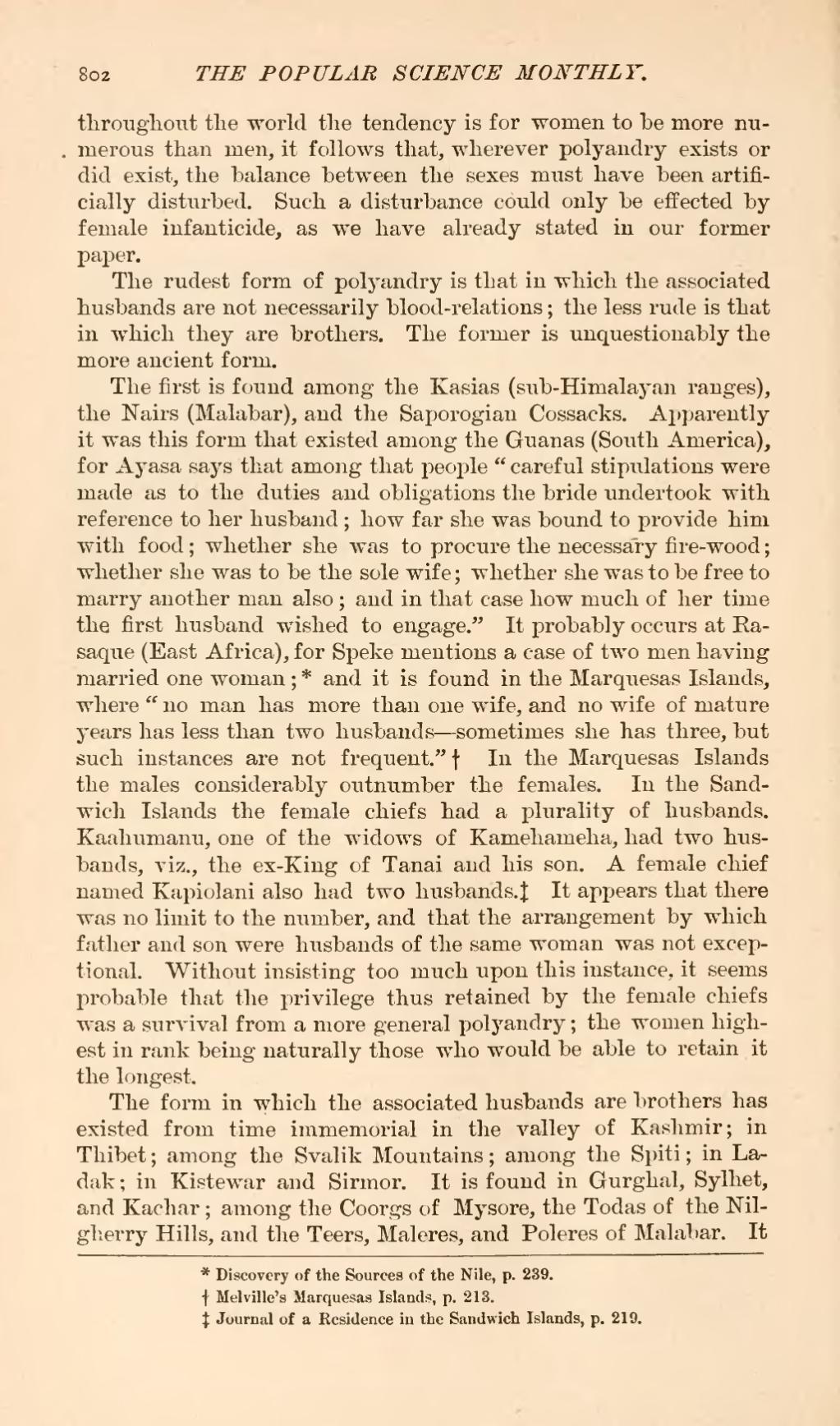throughout the world the tendency is for women to be more numerous than men, it follows that, wherever polyandry exists or did exist, the balance between the sexes must have been artificially disturbed. Such a disturbance could only be effected by female infanticide, as we have already stated in our former paper.
The rudest form of polyandry is that in which the associated husbands are not necessarily blood-relations; the less rude is that in which they are brothers. The former is unquestionably the more ancient form.
The first is found among the Kasias (sub-Himalayan ranges), the Nairs (Malabar), and the Saporogian Cossacks. Apparently it was this form that existed among the Guanas (South America), for Ayasa says that among that people "careful stipulations were made as to the duties and obligations the bride undertook with reference to her husband; how far she was bound to provide him with food; whether she was to procure the necessary fire-wood; whether she was to be the sole wife; whether she was to be free to marry another man also; and in that case how much of her time the first husband wished to engage" It probably occurs at Rasaque (East Africa), for Speke mentions a case of two men having married one woman;[1] and it is found in the Marquesas Islands, where "no man has more than one wife, and no wife of mature years has less than two husbands—sometimes she has three, but such instances are not frequent."[2] In the Marquesas Islands the males considerably outnumber the females. In the Sandwich Islands the female chiefs had a plurality of husbands. Kaahumanu, one of the widows of Kamehameha, had two husbands, viz., the ex-King of Tanai and his son. A female chief named Kapiolani also had two husbands.[3] It appears that there was no limit to the number, and that the arrangement by which father and son were husbands of the same woman was not exceptional. Without insisting too much upon this instance, it seems probable that the privilege thus retained by the female chiefs was a survival from a more general polyandry; the women highest in rank being naturally those who would be able to retain it the longest.
The form in which the associated husbands are brothers has existed from time immemorial in the valley of Kashmir; in Thibet; among the Svalik Mountains; among the Spiti; in Ladak; in Kistewar and Sirmor. It is found in Gurghal, Sylhet, and Kachar; among the Coorgs of Mysore, the Todas of the Nilgherry Hills, and the Teers, Maleres, and Poleres of Malabar. It
- ↑ Discovery of the Sources of the Nile, p. 239.
- ↑ Melville's Marquesas Islands, p. 213.
- ↑ Journal of a Residence in the Sandwich Islands, p. 219.
